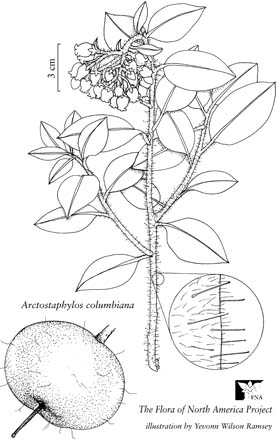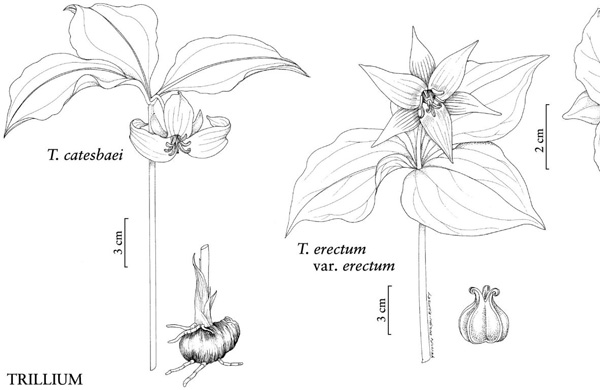

Contributor
- Topics: Archive
How many botanists does it take to write a flora?
Fredrick Pursh’s Flora Americae Septentrionalis (1814) was the first flora of continental scope. Resident botanists wrote treatises on North American plants in the early 1800s, and John Torrey and Asa Gray undertook the first attempt at production of a comprehensive flora of the continent in the 1830s. Subsequently, botanists focused on producing regional floras until 1905 when N. L. Britton began publishing the monographic series North American Flora at the New York Botanical Garden.
Today, publication of the Flora of North America is an ongoing and vital process coordinated by the Flora of North America Association (FNAA). The organization is working with more than 900 botanists to provide authoritative information on the names, characteristics, and geographical and ecological distributions of 20,000 species of plants native or naturalized in North America north of Mexico. Professional botanical artists are working closely with authors and editors to assure that the accompanying illustrations reflect the authors’ concepts and complement technical descriptions.
 FNAA Vice President for Business and Development, Dr. Nancy Morin observed, “One of the remarkable things about this project is that it really is a grassroots effort. Look at any other scientific endeavor of this scale anywhere in the world and it will either be government led or run by one or more large institutions.” Dr. Morin is also the regional coordinator for Southwest reviews, taxon editor, and author for Flora of North America. Lead editors and editorial centers are located at Harvard University Herbaria, Hunt Institute for Botanical Documentation, Missouri Botanical Garden, Illinois Natural History Survey, Canadian Museum of Nature, California Academy of Sciences, University of Montreal, University of North Carolina, University of Michigan, and the University of Kansas.
FNAA Vice President for Business and Development, Dr. Nancy Morin observed, “One of the remarkable things about this project is that it really is a grassroots effort. Look at any other scientific endeavor of this scale anywhere in the world and it will either be government led or run by one or more large institutions.” Dr. Morin is also the regional coordinator for Southwest reviews, taxon editor, and author for Flora of North America. Lead editors and editorial centers are located at Harvard University Herbaria, Hunt Institute for Botanical Documentation, Missouri Botanical Garden, Illinois Natural History Survey, Canadian Museum of Nature, California Academy of Sciences, University of Montreal, University of North Carolina, University of Michigan, and the University of Kansas.
The Flora of North America represents several lifetimes of study. It includes findings from the most recent research and also points out taxonomic problems or biological puzzles that might benefit from further investigation. The finished work will serve international, national, regional, and local constituents, including professional and amateur botanists, biologists, conservationists, land managers and stewards, horticulturists, agronomists, educators, and policy makers. It is a major reference for the USDA Plants database.
 The finished flora, published by Oxford University Press, will appear in 30 volumes that will be available in print and online. Sixteen volumes in the series are already complete and contain accounts of 182 families, 1,741 genera, and 11,104 species, with original illustrations of 4,250 species, subspecies, or varieties.
The finished flora, published by Oxford University Press, will appear in 30 volumes that will be available in print and online. Sixteen volumes in the series are already complete and contain accounts of 182 families, 1,741 genera, and 11,104 species, with original illustrations of 4,250 species, subspecies, or varieties.
There is light at the end of this botanical tunnel. Four more volumes are ready to go to press and content for the remaining volumes has been submitted and is either nearly ready for publication or is in various stages of editing, review, and revision. Everything is expected to be completed by the end of 2016, Flora willing.
Follow our progress on Facebook at Flora of North America Association. Further details may be found at www.fna.org where you can read about the full scope of the project, sponsor an illustration, and access online content.









Responses